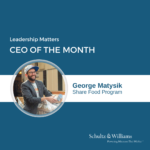Staying Relevant
For most nonprofits, the realities of fundraising and marketing today—declining acquisition and retention rates, shifting donor/member expectations, economic and competitive pressures and internal dynamics (e.g. silos)—make it increasingly difficult to attract new members and donors. More important, the challenges in engaging and maintaining those relationships are at an all-time high.
Fundraising today is no longer a single event, nor does it operate in a vacuum. It’s a process. Single, disparate contacts with potential donors are no longer enough to build a sustainable basis of support. And they don’t foster the kind of “stickiness” necessary for organizational health and growth.
Engagement is about building a community of members, donors, volunteers, advocates, attendees, staff and other supporters. The hardest part of building any community is staying relevant and understanding how to foster relationships that are inclusive AND additive.
While many nonprofits don’t have “alumni” in the traditional sense, they do develop constituencies that have (or had) an affinity for the organization’s mission or cause, have a geographic footprint and provide opportunities to support what they do. By most definitions, we are all community builders, and our work is built on a simple premise: maximize the value of the organization to each donor and maximize the value of each donor to the organization.
One of the surest ways to stay relevant is to build communication plans that promote clarity of purpose and focus. Below are two exercises designed to aid in creating effective communications. The first speaks to a broader, strategic question of support, and the second provides a framework for the tactical execution of a communication plan.
The Four Golden Questions
Many organizations fall into the trap of communicating from an inward-out perspective—the communication tends to focus on the organization’s needs and priorities instead of on the member or donor. When a marketing or fundraising piece is too inwardly focused on YOUR needs, it distances the reader from the story and tends to sound institutional and cold.
Try this during your next staff or Board retreat: In a group setting, while capturing group feedback, ask each participant to answer the “Four Golden Questions” of giving (or membership).
- Why should I give (or join)?
- What do I “get”?
- Where does my money go?
- Why should I stay?
The goal is to answer each question from the donor’s or member’s perspective, not why you or your organization thinks a donor or member should join. You’ll be fascinated by the varied, disparate answers. You’ll learn from the group’s ease or difficulty in answering these questions, especially the last one, “Why should I stay?” Of course, the answers may differ based on the audience(s) you’re trying to reach, but the principal idea is to understand how a particular group of your constituents thinks or feels about being part of your community. This exercise will help you create a message blueprint that can be leveraged throughout the organization.
Building a Communication Curriculum
Every organization has its own “communities”—new members and donors, long-term supporters, event attendees, those who have recently lapsed, young members/donors, etc. Knowing and understanding what to say to each audience, at each point in their journey is the MOST important part of retention.
What you need is a communications curriculum—a sequence of communications that are sent frequently and are differentiated for each type of supporter. What does a first-year donor communications plan look like? What should we say? When should we say it? Over what channels? How does the communication pathway differ for a long-term donor? An event attendee? An online petition signer?
Although there are a number of moving parts, mapping the communication experience for each type of member or donor is time-intensive but not complicated. In the end, this approach yields incrementally more members, donors and revenue than a one-size-fits-all approach to marketing and fundraising. It also allows your organization to differentiate investment by segment and to measure impact in your various program areas.
Here are some examples.:
- Add an onboarding series to welcome new donors/members to your organization, set expectations for communications and ask for additional information or support.
- Create a trigger-based e-communication series for event attendees in order to thank them and to invite them to support your organization further through giving or membership. (Do this within days following the event!)
- Send “surprise and delight” communications to cultivate relationships with existing members and donors.
- Build communications to convert “hand-raiser” leads (online or offline) into traditional supporters.
There are a several ways to approach this exercise, but it starts with identifying a few key audiences and creating a communications stream with articulated goals and behaviors that will engage and involve supporters in your nonprofit’s “community”.




